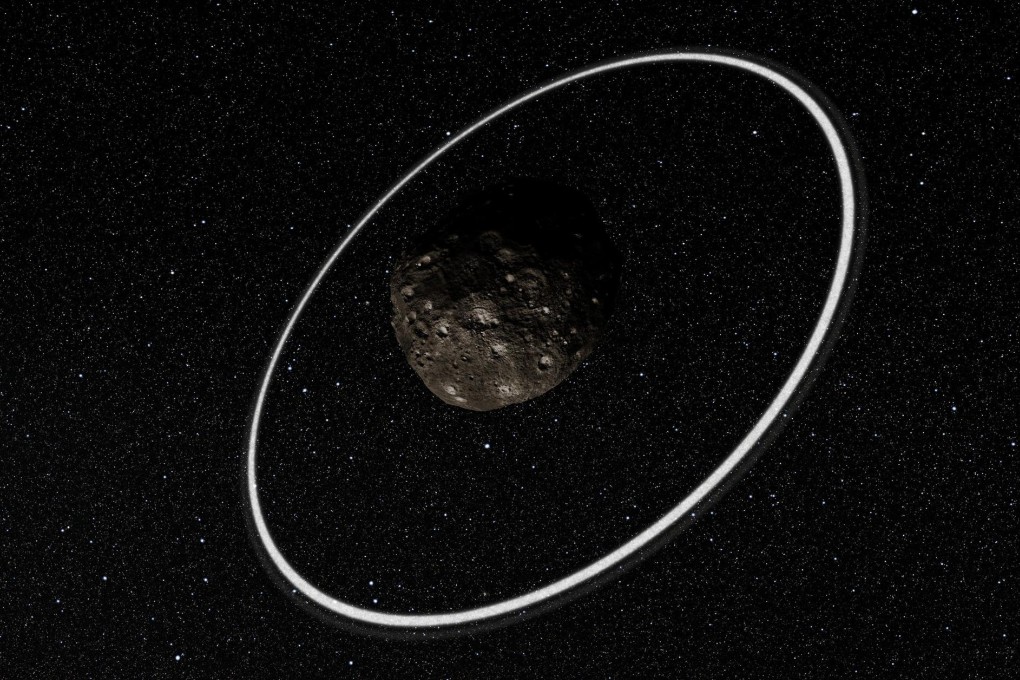Astronomers find two rings around asteroid Chariklo
Astonished astronomers say they have found rings around an asteroid, the smallest object known to have this feature and only the fifth after Jupiter, Saturn, Uranus and Neptune.

Astonished astronomers say they have found rings around an asteroid, the smallest object known to have this feature and only the fifth after Jupiter, Saturn, Uranus and Neptune.
Observations were first made last June leading to the detection of the twin rings around a rock called Chariklo, illustrated above, as it passed in front of a star, scrutinised by seven telescopes dotted over a 1,500-kilometre stretch of South America.
As expected, the star seemed to vanish for a few seconds as Chariklo blocked its light - a phenomenon known as occultation, an international team reported in the science journal Nature.
But the mini-eclipse was much more than the astronomers were expecting.
"A few seconds before, and again a few seconds after the main occultation, there were two further very short dips in the star's apparent brightness," the European Southern Observatory said.
"Something around Chariklo was blocking the light!"